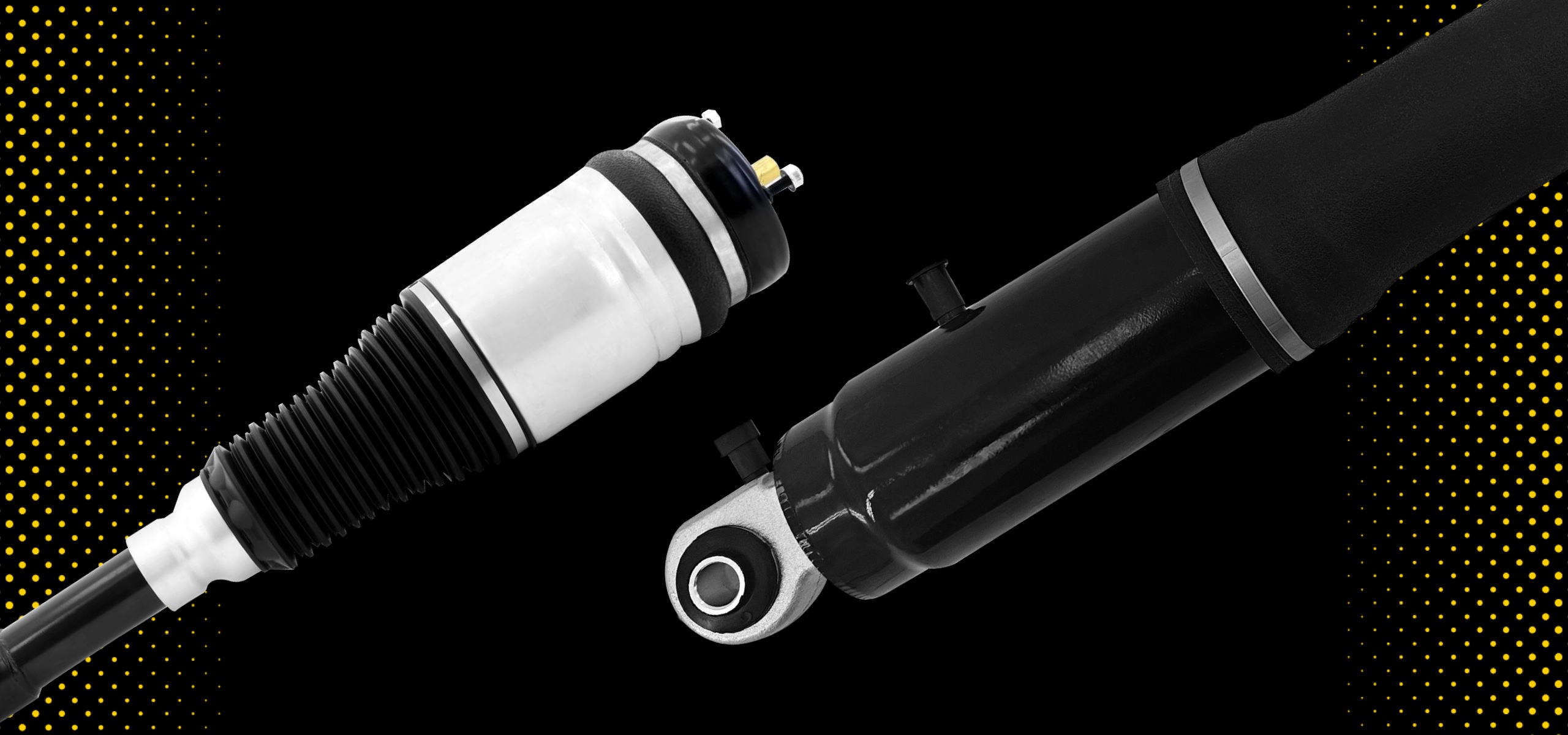
Shocks 101
Why You Should Replace Air Shocks & Struts
Why You Should Replace Air Shocks & Struts
What Are Air Shocks & Struts?
Air shocks and struts team up with pneumatic springs in an air suspension system to smooth out bumps and deliver a more comfortable ride. By giving adjustability to all four wheels, air shocks and struts can help reduce body roll when turning and reduce vibrations for a more comfortable ride. Air shocks and struts can be found on trucks, vans and SUVs and can accommodate heavy loads while smoothing out the ride.

What Causes Air Shocks & Struts to Fail?
Failure in air shocks and struts can be caused by a few different factors. Ozone and environmental exposure degrade rubber after years of use while normal wear and tear and damage from hard impacts can cause air shocks and struts to fail. Striking a curb or pothole or driving over rough roads can cause extensive damage to air shocks and struts. Air shocks and struts can fail when the spring on one corner or axle no longer holds pressure. As a result, you may experience a rough ride, and your vehicle may lean excessively to one side while driving. You may also notice nosedive, excessive bouncing, squatting, uneven tire wear or an illuminated Check Air Suspension light.
What are the Signs of Bad Air Shocks & Struts?
Failing air shocks and struts not only reduce the handling and performance of your vehicle but they can result in an uncomfortable ride. If you recognize any of the symptoms of worn air shocks and struts, have your auto technician examine your vehicle. Be on the lookout for:
Rough Ride
A rough ride is a telltale sign that there could be an issue with the air shocks or struts. When the air shocks or struts are failing, the weight of the vehicle isn’t properly supported, and impacts are transferred to the vehicle’s frame. As a result, you’ll likely experience a rough ride, feeling every bump in the road.
Sagging Suspension
A sagging suspension can indicate an issue with the air shocks or struts. If there is an air leak in one of the shocks or struts, it will cause the suspension to sit lower.
Nosedive
When the shocks and struts can’t support the weight of the vehicle, it can lead to nosedive when suddenly taking off or making a hard brake. The weight of the vehicle is transferred to the front causing it to dip forward.
Leaning While Turning
If the air shocks or struts are failing, it can result in the vehicle feeling like it is swaying or leaning when making a turn. In addition, the vehicle will be harder to steer.
Excessive Bouncing
Worn air shocks and struts are no longer effective in absorbing road impacts which can cause the vehicle to continue bouncing after hitting a bump.
Uneven Tire Wear
Premature and uneven tire wear can occur when the air shocks and struts are failing and can no longer support the weight of the vehicle.
Warning Light
Issues with the air shocks or struts can cause the check air suspension light to illuminate on the dashboard. You may see an icon of a car with an arrow pointing up and down or it could say, “Stop, car too low.”
Why You Should Replace Air Shocks or Struts
Worn air shocks and struts can cause the vehicle to bounce, squat, dive and roll excessively leading to handling issues and an uncomfortable ride. Replacing air shocks or struts on a car, truck or SUV is a worthwhile investment to restore ride height and maintain the vehicle’s performance to ensure a smoother, more comfortable driving experience.
Improved Ride Quality
Designed to handle the bumps, dips and jarring that comes from driving over potholes and rough roads, air shocks and struts effectively absorb the energy from these roadway hazards to deliver a smoother ride.
Adjustability
With air shocks and struts, you can adjust the ride firmness and height. Depending on driving conditions, you can choose a softer ride on rough roads, or a firm feel for highway trips.
Improved Towing Capabilities
When towing or carrying a heavy load, air shocks and struts system can help keep the rear of the vehicle level which reduces the risk of sagging, bottoming out and excessive tire wear.
Longer Parts Life
Replacing air shocks and struts reduces vibrations which can help curtail wear and tear on other suspension parts.
Learn more about quality shocks, struts, and strut assemblies, find the right car part, or find a local repair shop today.
The content in this article is for informational purposes only. You should consult with a certified technician or mechanic if you have questions relating to any of the topics covered herein. Tenneco will not be liable for any loss or damage caused by your reliance on any content.